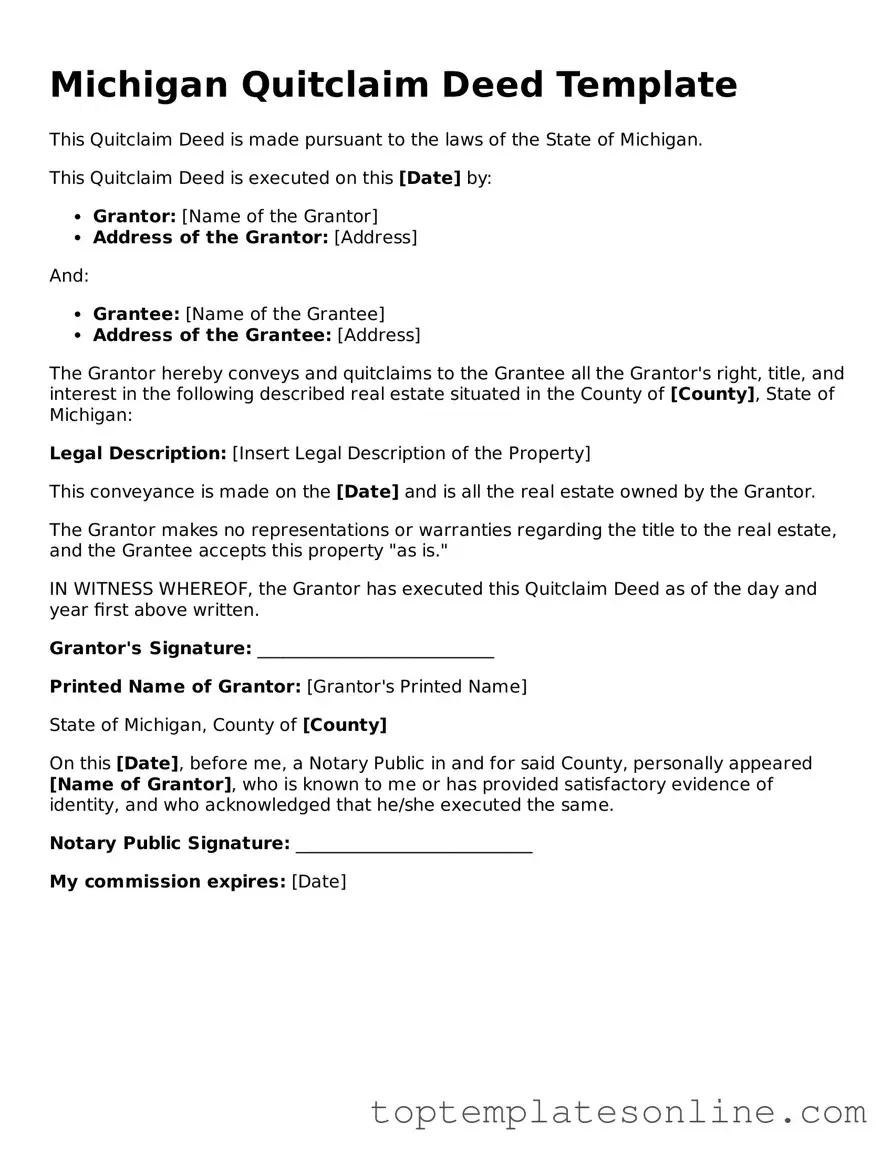The Michigan Quitclaim Deed form serves as a vital instrument in real estate transactions, particularly for individuals seeking to transfer property ownership without the complexities often associated with traditional deeds. This form allows the granter—the individual relinquishing their interest in the property—to convey any rights they may have to the grantee, or the recipient of the property. Unlike warranty deeds, which provide assurances about the title's validity, a quitclaim deed offers no such guarantees, making it essential for both parties to understand the implications of this transfer. The form typically requires basic information, including the names of both the granter and grantee, a legal description of the property, and the date of the transaction. Additionally, it may necessitate notarization to ensure its legal validity. While often used among family members or in situations where trust exists between parties, the Michigan Quitclaim Deed can also facilitate the quick transfer of property in various legal contexts, such as divorce settlements or estate planning. Understanding the nuances of this form is crucial for anyone involved in property transactions in Michigan, as it impacts ownership rights and future claims on the property.
